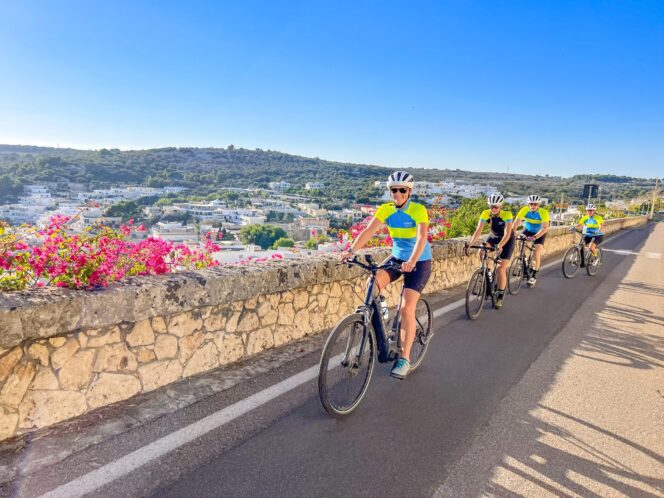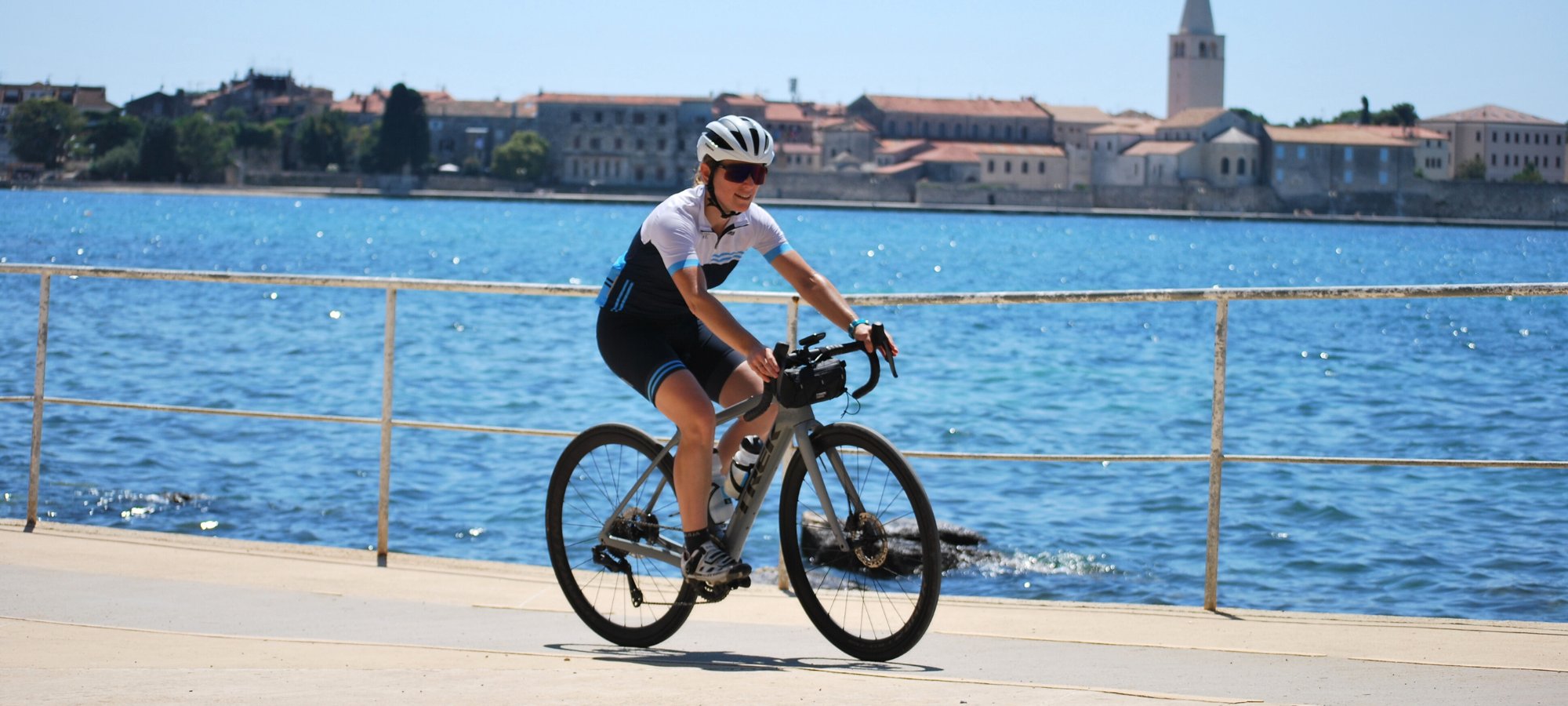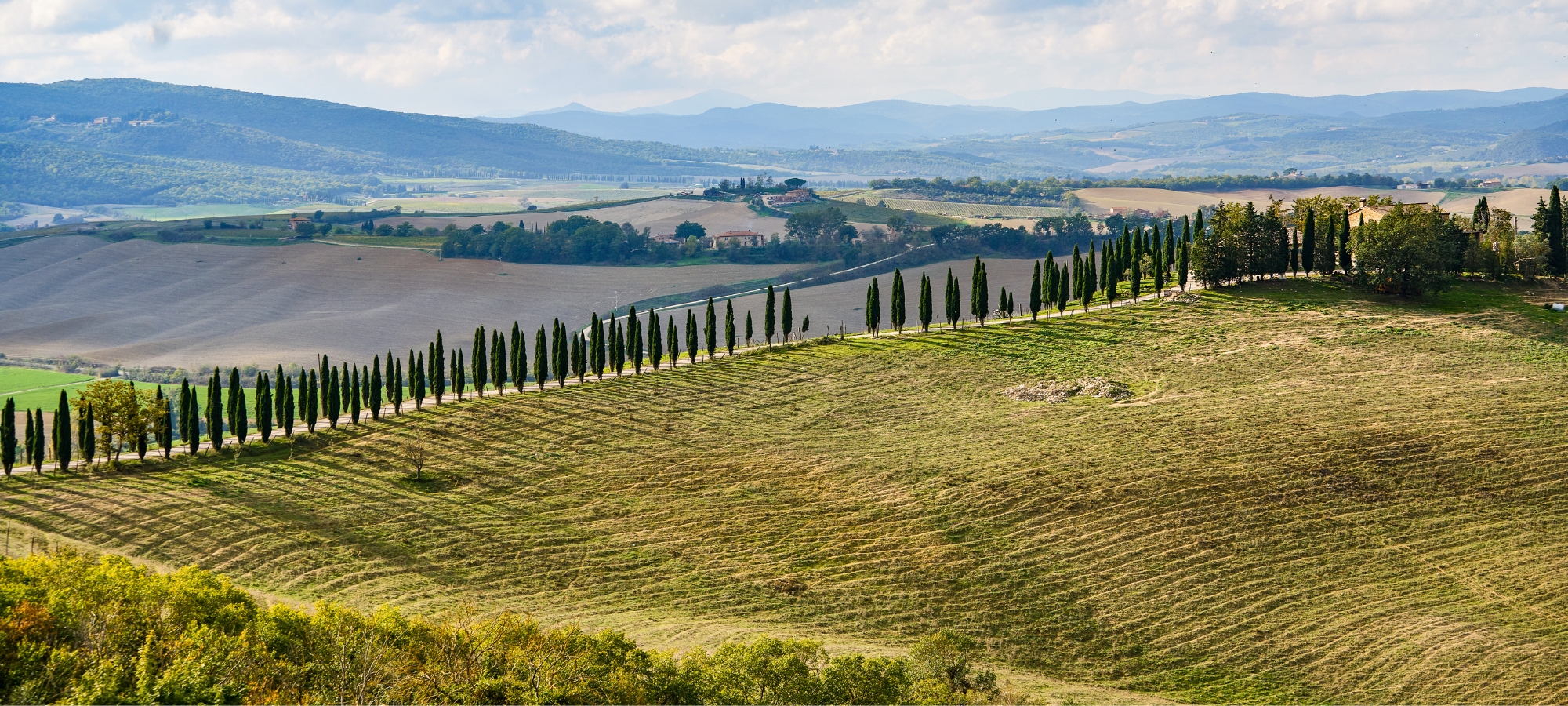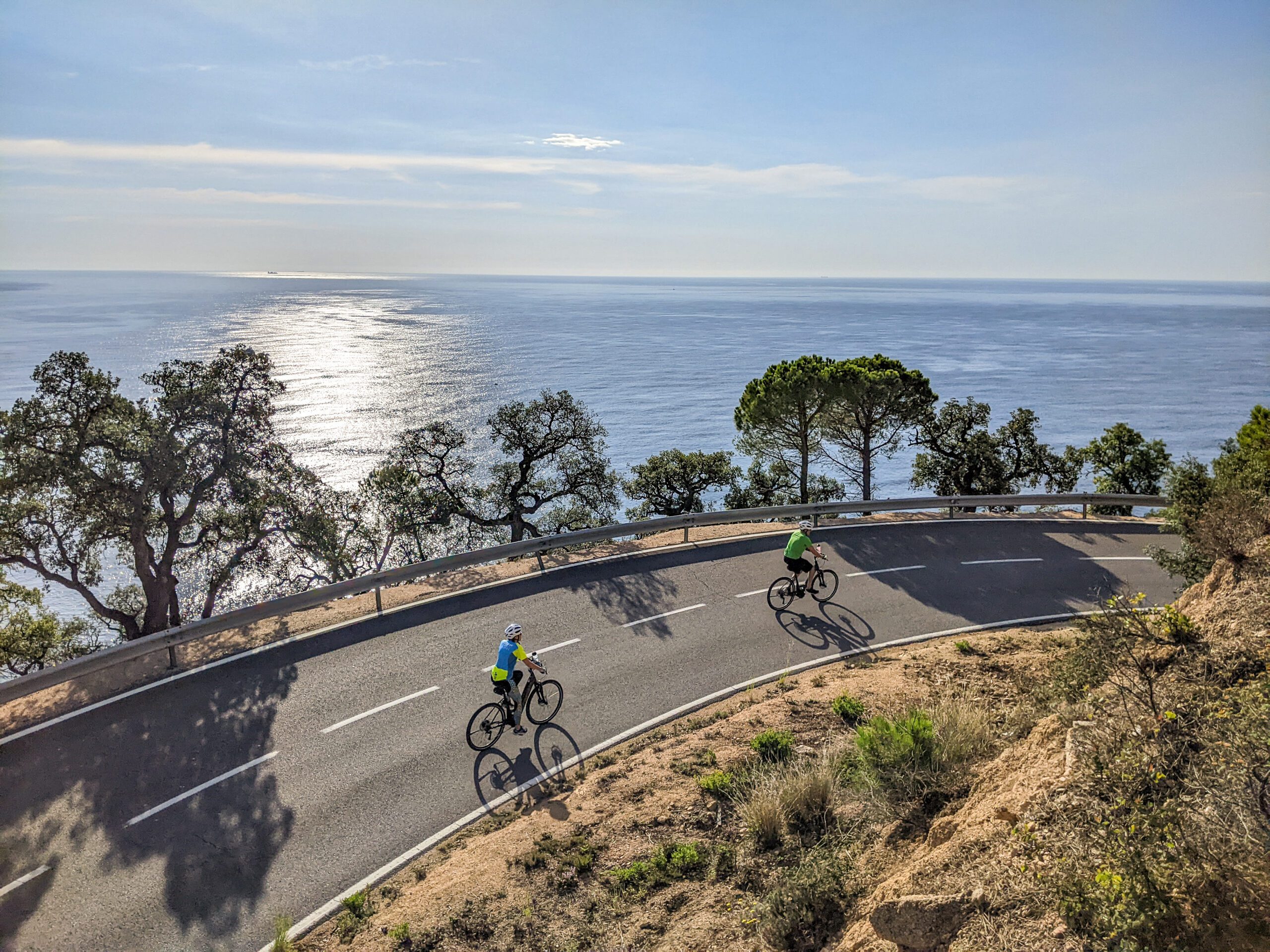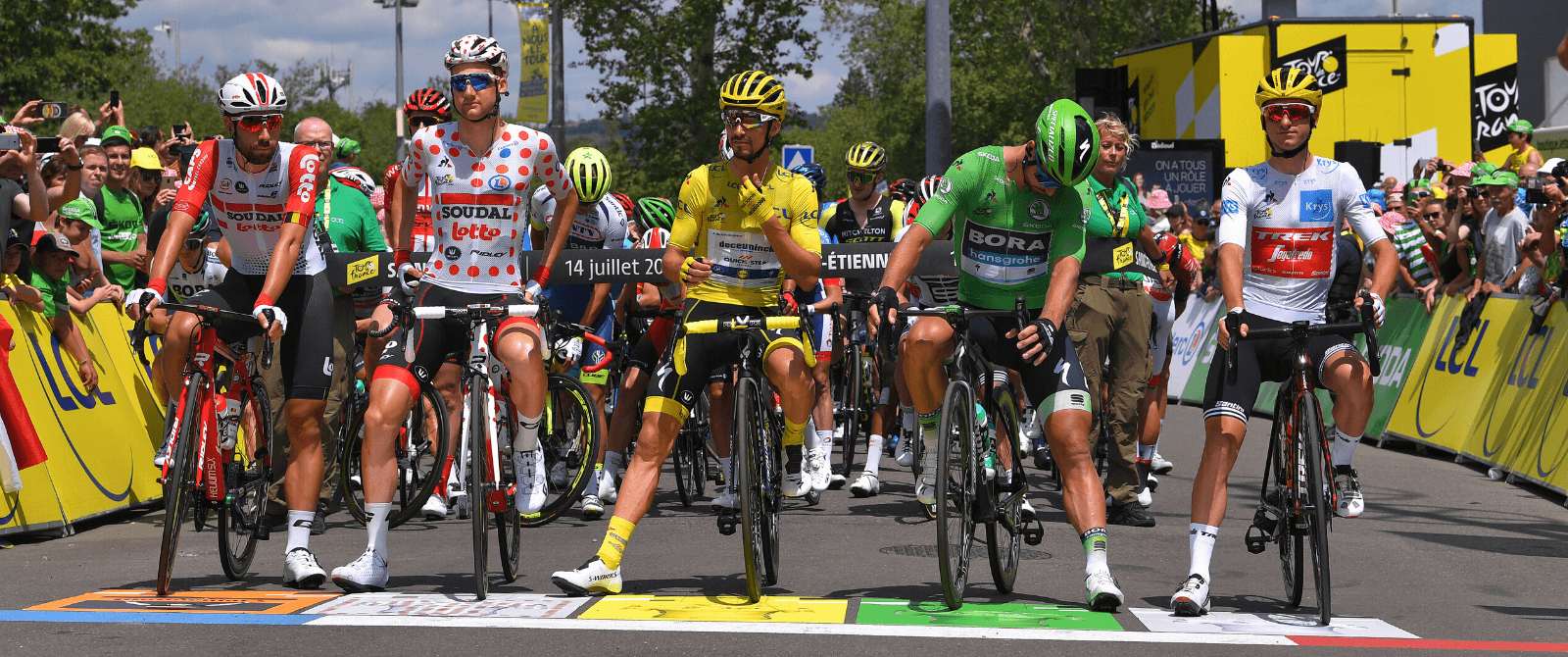
The meaning of the Yellow Jersey, Green Jersey, Polka Dot Jersey, and White Jersey of the Tour de France
The Tour de France is one part bike race, one part tourist adventure, and one part fashion show. Ask any professional cyclist, and they’ll tell you that winning (or even contesting) one of these jerseys is the pinnacle of the sport and highlight of their careers. But while many cycling fans worldwide are familiar with the pomp and circumstance of the Yellow Jersey, they may not know the stories behind the other jerseys up for grabs.
What does the Yellow Jersey mean in the Tour de France?

The Yellow Jersey, or maillot jaune, is the symbol perhaps most closely associated with the Tour de France worldwide. It designates the leader of the General Classification, or the overall, collective time of all stages together. It can change hands often throughout the entirety of the race and can be won without winning a single stage of the Tour.
Its beginnings date back to 1919, when the Tour de France founder, Henri Desgrange, decided that the leader of the race needed to be clearly identified with bright colors as he rode through the night. Today, a new Yellow Jersey is printed for each day of the Tour that it changes hands, and each one is imprinted with “HD” in honor of Desgrange himself.
Winners of the Yellow Jersey are awarded a trophy, cash prize, and final jersey of the race. The current record for overall Yellow Jersey wins is five, shared by Jacques Anquetil, Eddy Merckx, Bernard Hinault, and Miguel Indurain.
What does the Green Jersey mean in the Tour de France?

The Green Jersey, or maillot vert, is also often referred to as “the sprinter’s jersey,” although this is a slight misnomer. Green Jersey winners accumulate the most points throughout the entirety of the race. They can earn these points for sprint wins, finishing in the top three places of a stage, or at intermediate sprints in the middle of a stage. Many of these contests take place during flatter stages, so sprinters have an advantage, but the Green Jersey winners are racers with more grit, persistence, and consistency across the entirety of the race.
Peter Sagan, who still races today, is the current record holder for most Green Jersey wins. Green Jersey winners are awarded cash prizes, trophies, and an overall jersey.
What does the Polka Dot Jersey mean in the Tour de France?

The Polka Dot Jersey, or “King of the Mountains Jersey,” is given to the best climber in the Tour, or the racer who has accumulated the most points for winning mountaintop finishes. Many times, the winner of the Polka Dot Jersey and Yellow Jersey are very close in standings, as mountaintop finishes play a huge role in the strategy of the overall race.
The Tour de France classifies climbs based on length, grade, and overall difficulty, where “category 4” is the least difficult and “hors categorie” is the most difficult. Difficult climbs offer more points for winners, and therefore the lightest, best climbers have an advantage in this jersey battle.
The current record-holder for most Polka Dot Jersey wins is French rider Richard Virenque, who has won it seven times. Polka Dot Jersey winners are awarded cash prizes, trophies, and an overall jersey.
What does the White Jersey mean in the Tour de France?

The White Jersey, or maillot blanc, is given to the best-placed rider overall under the age of 25. This classification began in 1975. Before 1975, there was a white jersey awarded to the overall best-ranked cyclist in points, climbs, and time, but then was changed to go to best “neo-pro” or new, inexperienced professional.
Five riders have won both the Yellow Jersey and White Jersey in one year: Laurent Fignon, Jan Ullrich, Alberto Contador, Andy Schleck, and most recently, Egan Bernal in 2019. Four riders have won several White Jerseys, including Marco Pantani, Ullrich, Schleck, and Nairo Quintana.
See the Jerseys for Yourself with Trek Travel

Trek Travel can get you closer than you ever thought possible to all of these jerseys. Our Tour de France bike tours include visits to the podium, special access to the teams, and even VIP views of the finish lines and jersey presentations. It’s a chance to see the race and its history like never before as you witness the battles for each jersey with your own eyes.
